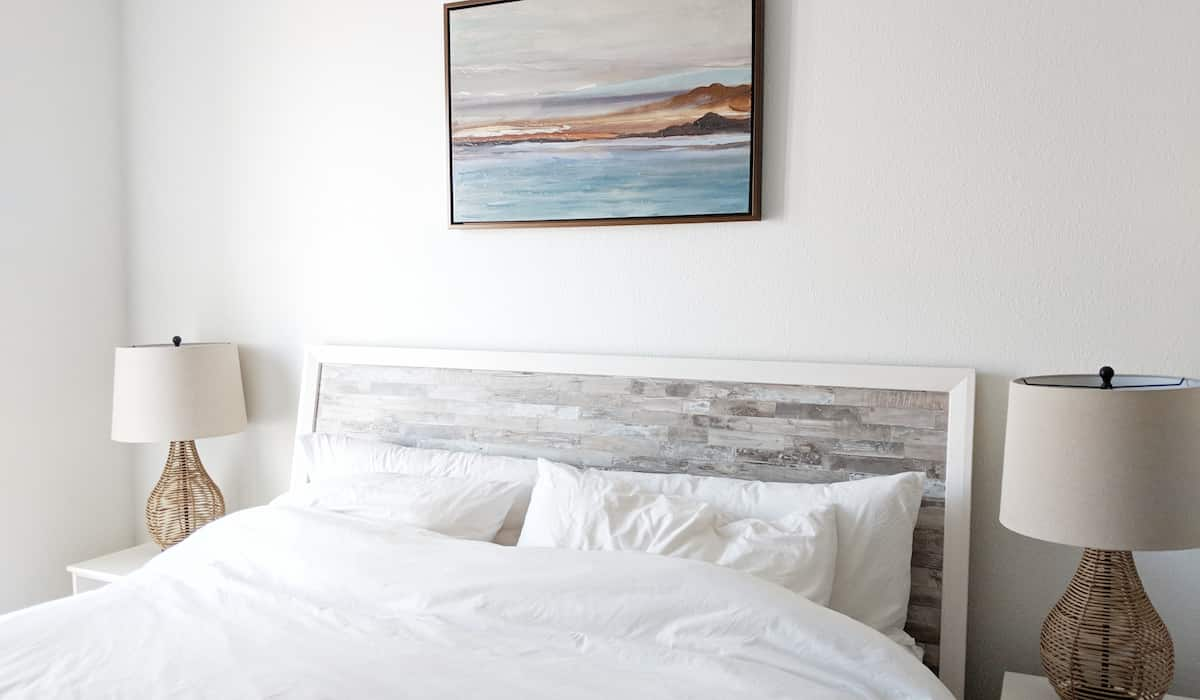Painting kitchen cabinets yourself should take about three days. If you do it right the first time, the paint job will last decades.
With just a few tools and some good advice, sprucing up your kitchen with a fresh lick of paint is one of the easiest DIY home renovations you can tackle.
Read on to learn some essential tips on how to get a smooth finish when painting kitchen cabinets.
Table Of Contents
Clean and Sand With the Right Tools
If you’re wondering how to paint kitchen cabinets, and whether you should paint kitchen cabinets or stain, you first need to run over them with warm, soapy water to get any traces of dirt and grease off them. If any cabinets are greasy, such as those nearby the oven or stovetop extractor fan, use a commercial counter spray.
Once the cabinets are dry, you can start sanding. You can sand by hand but you might regret it once you realize how much elbow grease the task requires. Instead, get yourself an orbital sander and learn how to use it properly.
Hardwoods require 100 grit sandpaper and softer woods need 120 to 150 grit. Using a sandpaper that’s too coarse can leave scratches that will show up under the final coat of paint
You don’t need to sand the entire surface when sanding between the kitchen cabinets’ paint finish. Instead, look carefully over the cabinets for any rough spots. Polish those down with a sanding sponge or your orbital sander.
Keep Dust Under Control
Dust, hair, and any light debris in the air is a painter’s enemy. These fine particles will stick to the primer and paint, creating blemishes in the final paint finish for kitchen cabinets.
Once the cabinets are clean and sanded, give your entire room a good going over with the vacuum. Empty the bag right away. You’ll need to vacuum multiple times during the painting process.
A tack cloth is great at getting anything not picked up by the vacuum. Buy a microfibre version or make your own from old cotton t-shirts.
Paintbrush, Foam Roller, or Spray Gun?
When you think of painting, a paintbrush is probably the first tool that springs to mind. If your cabinetry has carving or etching, a paintbrush is indeed the best option. You can work the paint into all those nooks and crannies.
The tool of choice by professional companies like Majestic Painters is a foam roller. Use a roller if you want a smooth paint finish for kitchen cabinets and on flat surfaces like the sides of your cabinetry or a block-style kitchen island.
Sprayers get the job done quickly and have a very fine finish. However, they require extensive preparation so might not be the best choice for DIY painting kitchen cabinets.
Use a Self-Leveling Paint
Self-leveling paint is the go-to when you’re looking for a paint that has a smooth kitchen cabinets paint finish. This type of paint is great for novices or those unsure whether their preparation work was up to scratch.
Nowadays, most quality paint brands sell self-leveling paint. If you’re concerned about whether the paint you’re interested in using will self-level, double-check with your paint supply shop before you make your purchase.
How to Get a Smooth Finish When Painting Kitchen Cabinets
Before you tackle your entire kitchen cabinetry, practice by giving an old piece of wooden furniture a new life. You can make your mistakes on that rather than in your kitchen.
Now that you know exactly how to get a smooth finish when painting kitchen cabinets, you should be ready to cross that task off your home renovation to-do list.
Browse the other articles on the website to learn more about DIY and professional home improvement.


